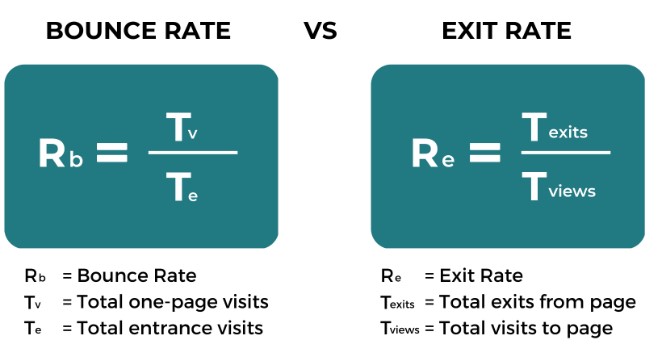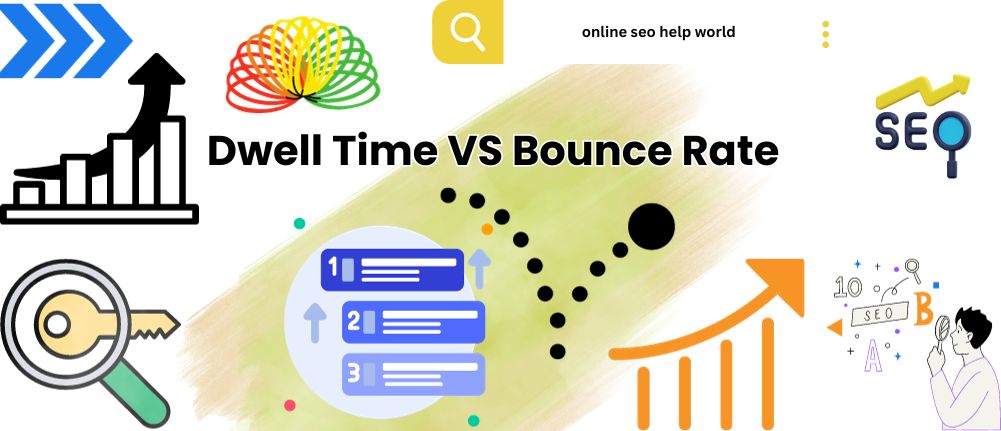Introduction
In the realm of online user behavior analysis, two key metrics stand out: Dwell Time and Bounce Rate. Both metrics hold pivotal roles in gauging the success of a website’s performance and user engagement. While they are related to user behavior, they represent distinct aspects of it. In this article, we’ll delve deep into the world of Dwell Time VS Bounce rate in digital marketing, deciphering their meanings, significance, and how they influence your website’s overall success.
Dwell Time VS Bounce Rate: Bounce rate in digital marketing
Dwell Time: Engaging Users for Longer

Dwell Time, often referred to as “dwell on page,” measures the amount of time a user spends on a webpage before returning to the search results or navigating elsewhere. It’s a significant indicator of content quality and relevancy. When users spend more time on a page, it suggests that the content is engaging and valuable to them.
Longer Dwell Time can positively impact your website’s SEO on page and off page by signaling to search engines that your content is relevant and useful. This can potentially improve your search engine ranking, leading to increased organic traffic. To enhance Dwell Time, focus on creating informative, well-structured content that resonates with your target audience.
Bounce Rate: Understanding Quick Exits
On the other hand, bounce rate in digital marketing the percentage of visitors who navigate away from your site after viewing only one page. A high Bounce Rate could indicate various issues, such as irrelevant content, slow page load times, or poor user experience. It’s important to note that not all bounces are negative; for instance, a user finding the exact information they need on your landing page might leave quickly, resulting in a bounce but a successful interaction.
Reducing Bounce Rate involves optimizing your website’s design, enhancing user experience, and ensuring that the content aligns with visitors’ expectations. Engaging headlines, clear navigation, and compelling visuals can help keep visitors on your site longer.

How Dwell Time and Bounce Rate Impact SEO
Both Dwell Time and bounce rate in digital marketing play critical roles in search engine optimization, albeit in different ways.
Dwell Time’s SEO Influence
Search engines, like Google, interpret longer Dwell Times as a positive signal. When users spend more time on a page, it suggests that the content is relevant and valuable. As a result, Google may consider such pages more deserving of a higher ranking. To boost Dwell Time, create captivating headlines, format your content for easy reading, and provide in-depth information that addresses users’ queries thoroughly.
Bounce Rate’s SEO Influence

A high Bounce Rate can be detrimental to your SEO efforts. It indicates that visitors are not finding what they’re looking for or are having a poor experience. Google might interpret this as a sign that your content is irrelevant or of low quality, potentially leading to lower search rankings. By optimizing your content, improving page load speed, and ensuring a user-friendly interface, you can reduce Bounce Rate and improve your SEO performance.
The Delicate Balance: Prioritizing User Experience
Striking the Right Balance
While Dwell Time and Bounce rate in digital marketing provide insights into user behavior, it’s important to strike a balance between the two. A page with extremely high Dwell Time but a high Bounce Rate might be retaining users, but they might not be finding the information they need. Conversely, a low Bounce Rate but low Dwell Time might suggest quick interactions that lack engagement.
The key lies in offering valuable content that encourages users to stay longer while also ensuring that the content is easily accessible and meets their needs promptly. Regularly analyzing these metrics and optimizing your content accordingly is the path to a well-rounded user experience.
Q1: How can I improve Dwell Time?
To enhance Dwell Time, focus on creating high-quality, comprehensive content that addresses users’ needs. Use engaging visuals, clear formatting, and relevant internal links to encourage users to explore more.
Q2: Does a high Bounce Rate always indicate poor content?
Not necessarily. While a high Bounce Rate can indicate issues, such as irrelevant content or slow load times, it’s not always a reflection of poor content. Users might find the information they need quickly and exit, resulting in a bounce.
Q3: Is there an ideal Dwell Time or Bounce Rate?
There’s no universal ideal, as optimal metrics can vary based on industry, content type, and user intent. It’s best to focus on improvement rather than chasing specific numbers.



After looking into a few of the articles on your website, I truly like your technique of blogging.
I bookmarked it to my bookmark site list and will be checking back in the
near future. Please check out my website too and tell me your opinion.
Thank you sir. I really appreciate your interest.
I am extremely impressed with your writing skills as well as with
the layout on your blog. Is this a paid theme or did you modify it yourself?
Either way keep up the excellent quality writing,
it is rare to see a nice blog like this one nowadays.
Thank you. My plesure you read my blog.